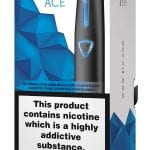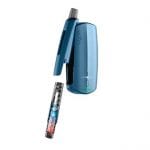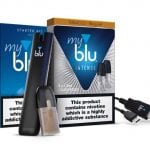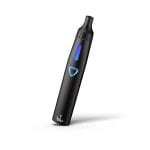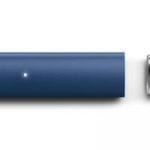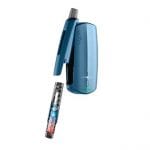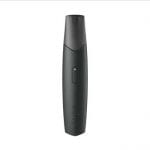Well-served
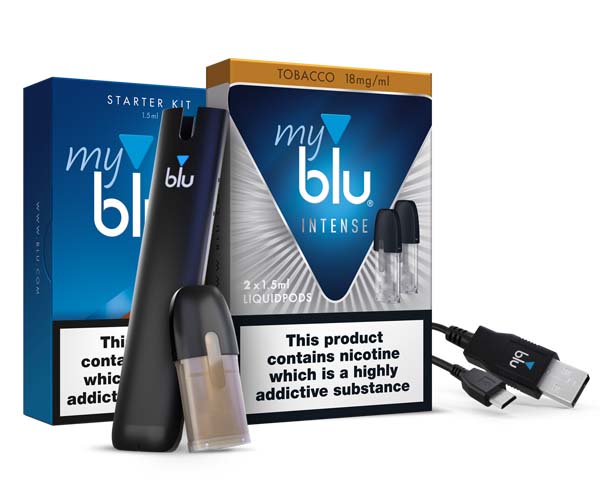
Thanks in part to their country’s embrace of vaping, U.K. smokers and vapers now have a wide variety of products to choose from.
By George Gay
Having watched the Brexit fiasco unfold, people living outside of the U.K. could be forgiven for thinking that the country has taken leave of its senses, a view that is shared by many of us living in the U.K. But I would argue that there is at least one area in which the U.K. has kept a level head and could be seen to be leading the world—and that is in respect of accepting some lower-risk products as part of a tobacco harm reduction strategy aimed at steering smokers away from combustible cigarettes, which is an ambitious and vital undertaking given that many institutions claim that tobacco smoking is the leading cause of preventable deaths.
And significantly, I think, this effort is not confined to the usual stakeholders; it has brought closer, if not together, tobacco manufacturers, vapor product suppliers, public health experts, formal and informal groupings of members of Parliament (MPs), the government and consumers. Not everything is fully aligned, of course, but there is a sense in which things are gradually coalescing.
This push for a transition from smoking to vaping has been going on for some time, but 2018 seemed to see it step up a gear—right from the start of the year. On Jan. 2, 2018, Philip Morris Limited (PML), the U.K. and Ireland affiliate of Philip Morris International, ran announcements in several U.K. newspapers saying that its New Year’s resolution was to try to give up cigarettes. This, to my way of thinking, was a clever campaign. In using the idea that it was trying to give up cigarettes, PML was aligning itself with smokers—it, too, was hooked and was feeling their pain. And it was letting smokers and other stakeholders know that quitting smoking was not something that could be achieved easily. After all, New Year’s resolutions are often based more on hope than expectation.
And, later in the year, the idea that quitting was not easy was built upon when the company, which had opened its fourth iQOS store in London in February, launched another campaign in which it recognized that quitting smoking was also something that could not necessarily be done alone—presumably either by individual smokers or individual companies.
But no matter. There was a feeling in the air that smokers and companies wishing to help smokers switch to vaping were not alone; they had official support. In a press note issued in August alongside its report titled, “E-cigarettes,” the House of Commons Science and Technology Committee said regulations should be relaxed in relation to the licensing and prescribing of e-cigarettes and in respect of the advertising of their health benefits. It also added that their level of taxation and use in public places needed to be reconsidered.
Meanwhile, reflecting part of what the committee had recommended, the U.K.’s Advertising Standards Agency (ASA) said in November it had changed its rules so that health claims were no longer banned from advertisements for electronic cigarettes. Such a change by the ASA did not mean that the suppliers of vapor products were free to make health claims as they saw fit—only that they would be able to do so should they fulfill the requirements of other agencies. Still, it seemed to be a step in the right direction.
Also in November, and reflecting another aspect of the committee’s findings, a report by a group of cross-party MPs focused on the vexed question of vaping bans. The All-Party Parliamentary Group for Vaping’s report titled, “Vaping in Workplaces and Public Places,” pointed out that though the U.K. did not ban vaping in public places, many employers and those in charge of public places did ban it. So it recommended in part that employers should have specific workplace vaping policies that balanced the needs of current vapers and smokers looking to switch to vaping with those of nonvapers—policies that were different to their workplace smoking policies.
Then, in December, again reflecting the committee’s report, the government agreed to review e-cigarette regulations once EU legislation ceased to apply. The Department of Health and Social Care said it was committed to a review to reappraise current regulations to ensure they continued to protect the nation’s health. It said it would look to identify where it could sensibly deregulate without harming public health or where current EU regulations limited its ability to deal with tobacco.
New devices
Of course, as welcome as all of these recommendations and proposals are, none of them make sense without smokers having access to alternative devices to combustible cigarettes, and they make little sense if those devices, which, after all, are still relatively new, are not the subject of frequent innovation so as to render them attractive to smokers—from the social smoker to the hardened smoker. Luckily, possibly in part because of the U.K.’s embrace of vaping, smokers and vapers were well served in 2018 by the major tobacco manufacturers, which delivered a range of new and updated alternative devices within the limitations of the EU’s Tobacco Products Directive.
Such commitment to innovation was well summed up in British American Tobacco’s (BAT) December launch of two products in which its new Puretech blade technology had replaced the coil and wick heating mechanism traditionally found in e-cigarettes. In a note posted on its website, BAT said that it was launching two new closed-system electronic cigarettes, Vype iSwitch and the Bluetooth-enabled Vype iSwitch Maxx, as it sought to provide an even more satisfying option for adult smokers looking for a potentially reduced-risk alternative to traditional cigarettes. Importantly, given that the switch from smoking to vaping has slowed, it said that the new products were aimed at smokers who had yet to find a vaping alternative that satisfied them. And it added that the power and design of the technology delivered nicotine more effectively—even with lower strength nicotine e-liquids.
Earlier in the year, BAT had launched the Vype ePen 3, which it described as being incredibly simple to use, an important feature given that some smokers are put off switching by what they see as complex devices. “With click in and out pods, Vype ePen 3 is designed to be a convenient and simple-to-use device, while a wide range of flavors and nicotine strengths provide a choice for each vaper,” BAT said in a note that accompanied the launch.
Meanwhile, Imperial Brands’ 2018 financial year saw it increase significantly its investment in next- generation products (NGP). The company’s NGP portfolio is built around the Blu brand, which will be 10 years old next year but which, during 2018, was expanded with three new launches in the U.K.: Myblu (also launched in Austria, Canada, France, Germany, Italy, Japan [0 percent nicotine only], Russia, Spain and the U.S.); Myblu Intense (also launched in the U.S.); and Blu Ace (also launched in France and Italy).
Imperial Brands said that its Blu brand was one of the best-selling in the world and available in an increasing number of markets. Myblu is described as a pod format device that combines a high-performance vaporizer with a simple liquid pod system. “The device takes just 20 minutes to charge and lasts all day,” said Imperial. “Blu Ace is our latest open system product and the most powerful device in our portfolio. It comes in an all-in-one stainless steel housing with a built-in liquid tank, and [it] delivers more puffs per charge than competitor products.”
And in September, Japan Tobacco International (JTI) launched Logic Compact in the U.K., which joined Logic Pro, said to be the U.K.’s No. 1 capsule vapor device. “JTI engineered every aspect of Logic Compact with a modern, design-conscious vaper in mind,” the company said in launching the device. “Magnetic pods, metallic colors (slate gray, steel blue and rose gold) and a large 350 mAh battery are all within a sleek, compact, pocket-sized device. Taste, performance and style come together in a device that’s simple, convenient and easy to use.”
“The U.K. is a growing e-cigarette market, with consumers increasingly looking for the ultimate vaping product,” Daniel Sciamma, managing director of JTI in the U.K., was quoted as saying. “Logic Compact offers a user-friendly and modern design, which is an exciting addition to our Logic portfolio. The new premium capsule vape is also an excellent product for adult smokers who are looking to vape—it delivers the perfect combination of flavor, power, simplicity and style.”
Finally, PML launched the iQOS Mesh, which, despite the first part of its name, is an electronic cigarette rather than a heated-tobacco product. The new product has a Mesh heater—rather than a wick and coil system—that is in constant contact with the e-liquid to provide a consistent vaping experience. According to a note posted on its website, digital controls detect when e-liquid levels are low, thus avoiding overheating and the possibility of a burnt taste, while the device’s battery is certified according to ISO standards featuring three protection levels to prevent overheating, short circuiting and pressure buildup.
The Mesh’s Veev flavor capsules, which are available in seven flavors, each in three nicotine strengths, are said to enable flavor swapping on the go with no flavor aftertaste from one capsule to another.
I have heard people knowledgeable about the vapor device market say that, in the U.K., there is a device for every smoker. And I have heard people knowledgeable about the cigarette market challenge whether this is true, particularly in respect of price. I don’t know where the truth lies, but to regain the previous momentum that had smokers switching in large numbers to vaping, it seems essential that some of the recommendations and proposals outlined above are put into practice so that at least smokers can be confident that less-risky, satisfying products are available at a reasonable price, that they are useable without needing a degree in engineering, and that they can be bought at a store near them and used widely in public places.
